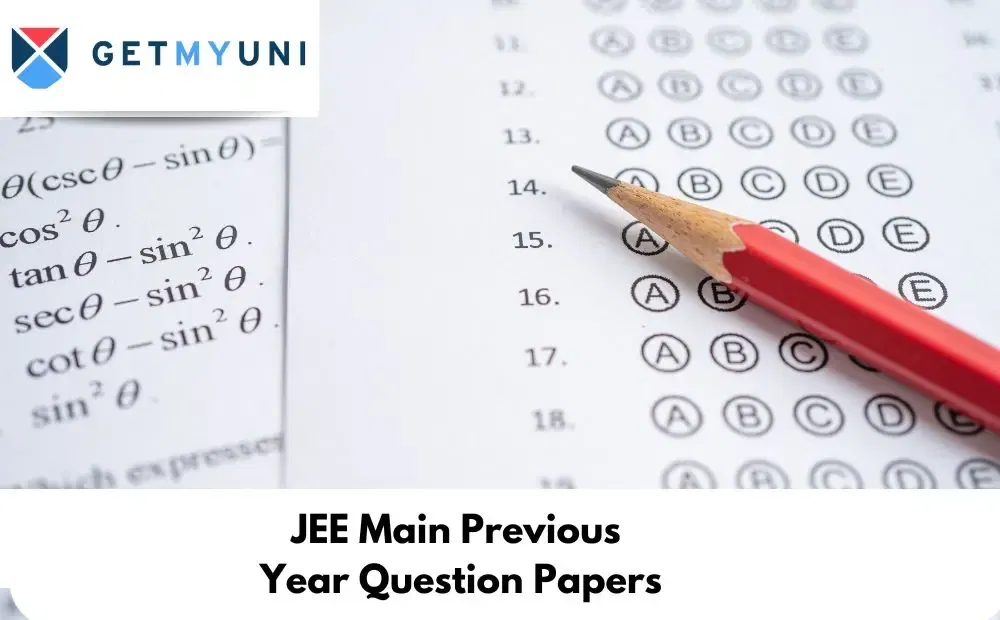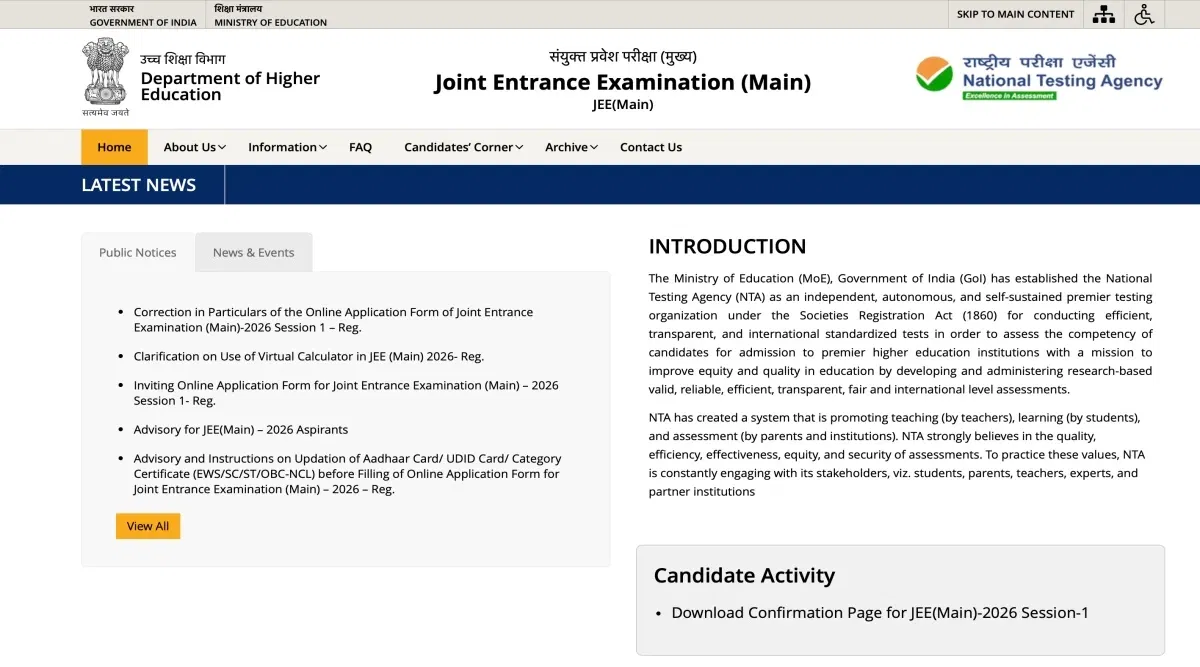JEE main semiconductor questions consist of queries related to electricity, insulator, electrical conductivity, resistance, temperature, metals, power points and so on. These questions are crucial for the exam and must be practised thoroughly.
Table of Contents
JEE main 2024 semiconductor questions are derived from the electricity chapter in class 11 and 12 physics syllabus. It consists of topics like intrinsic and extrinsic conductors, energy band gap, resistance etc. Candidates must practice the JEE main semiconductor questions carefully to get good scores in the JEE main exam for physics.
The JEE Main Session 1 examination was conducted from Jan 24 to Feb 1, 2024. Session 2 will be held from Apr 4 to Apr 15, 2024. The admit cards for the exams scheduled on Apr 4, Apr 5, and Apr 6, 2024, have been released by the NTA on the official website on Mar 31, 2024. The admit cards for the other exams of Session 2 will be released soon.
JEE Main Semiconductor Questions with Answer Keys - Download PDF
The JEE Main semiconductor questions with solutions that are asked in JEE Main 2024 are mentioned in detail and are added to the PDF below, and students can directly download the PDF by clicking on the link.
| Topic | PDF Link |
| JEE Main Semiconductor Questions with Answer Keys | Click Here |
Also Read: JEE Main Model Question with Solution - PDFs
Top JEE Main Semiconductor Questions with Answer
Top JEE Main Semiconductor Questions with answers are provided below step-wise for students; these questions are frequently asked in JEE Main 2024. The weightage of semiconductor in the exam is almost 4 to 5 questions asked in each shift.
Question 1: The energy band gap is maximum in
(a) metals
(b) superconductors
(c) insulators
(d) semiconductors
Answer: (c) The energy band gap is maximum in insulators
Question 2: A piece of copper and another of germanium are cooled from room temperature to 77 K, the resistance of
(a) each of them increases
(b) each of them decreases
(c) copper decreases and germanium increases
(d) copper increases and germanium decreases
Read More: Most Important & Repeated Question in JEE Main
Solution
Copper is a conductor. Germanium is a semiconductor. When cooled, the resistance of copper decreases and that of germanium increases.
Answer: (c) copper decreases and germanium increases
Question 3: In the common base mode of a transistor, the collector current is 5.488 mA for an emitter current of 5.60 mA. The value of the base current amplification factor (β) will be
(a) 48
(b) 49
(c) 50
(d) 51
Solution
β=Ic/Ib = Ic/(Ie – Ic) = 5.488/(5.60 – 5.488) = 5.488/ 0.112 = 49
Answer: (b) 49
Question 4: Carbon, silicon and germanium have four valence electrons each. At room temperature which one of the following statements is most appropriate?
(a) The number of free electrons for conduction is significant only in Si and Ge but small in C
(b) The number of free conduction electrons is significant in C but small in Si and Ge
(c) The number of free conduction electrons is negligibly small in all the three
(d) The number of free electrons for conduction is significant in all three
Read More: JEE Main Complex Number of Questions with Solutions
Solution
Carbon (C), silicon (Si) and germanium (Ge) have the same lattice structure and their valence electrons are 4. For C, these electrons are in the second orbit, for Si it is third and for germanium, it is the fourth orbit. In solid-state, the higher the orbit, the greater the possibility of overlapping of energy bands. Ionization energies are also less therefore Ge has more conductivity compared to Si. Both are semiconductors. Carbon is an insulator.
Answer: (a) The number of free electrons for conduction is significant only in Si and Ge but small in C
Question 5: In the ratio of the concentration of electrons that of holes in a semiconductor is 7/5 and the ratio of currents is 7/4 then what is the ratio of their drift velocities?
(a) 4/7
(b) 5/8
(c) 4/5
(d) 5/4
Solution
Drift velocity, Vd = I/nAe
(vd)electron/(vd)hole = (Ie/Ih)(nh/ne) = (7/4) x (5/7) = 5/4
Answer: (d) 5/4
Question 6: At absolute zero, silicon (Si) acts as
(a) non-metal
(b) metal
(c) insulator
(d) none of these
Solution
Semiconductors like silicon (Si) and germanium (Ge) act as insulators at low temperature.
Answer: (c) insulator
Read More: 9 Most Difficult Questions in JEE Main with Answers
Question 7: The mobility of electrons in a semiconductor is defined as the ratio of their drift velocity to the applied electric field. If for an n-type semiconductor, the density of electrons is 1019 m–3 and their mobility is 1.6 m2 /(V-s) then the resistivity of the semiconductor (since it is an n-type semiconductor contribution of holes is ignored) is close to
(a) 0.2 m
(b) 4 m
(c) 2 m
(d) 0.4 m
Solution
J = neVd
Resistivity, ρ = E/j = E/neVd = 1/ne(vd/E) = 1/neμe
Resistivity, 1/(1019 x 1.6 x 10-19 x 1.6) = 0.39 Ω m = 0.4 Ω m
Answer: (d) 0.4 m
Question 8: The electrical conductivity of a semiconductor increases when electromagnetic radiation of a wavelength shorter than 2480 nm is incident on it. The bandgap in (eV) for the semiconductor is
(a) 0.5 eV
(b) 0.7 eV
(c) 1.1 eV
(d) 2.5 eV
Solution
Band gap = Energy of photon of = 2480 nm
Energy = (hc/λ) J = (hc/λe) eV
Band gap = ([(6.63 x 10-34) x (3 x 108)]/[(2480 x 10-9) x (1.6 x 10-19)]) = 0.5 eV
Answer: (a) 0.5 eV
Read More: JEE Main MCQ Questions with Answers - PDFs
Question 9: The difference in the variation of resistance with temperature in a metal and a semiconductor arises essentially due to the difference in the
(a) crystal structure
(b) variation of the number of charge carriers with temperature
(c) type of bonding
(d) variation of scattering mechanism with temperature
Answer: (b) variation of the number of charge carriers with temperature
Question 10: A strip of copper and another germanium are cooled from room temperature to 80 K. The resistance of
(a) each of these decreases
(b) copper strip increases and that of germanium decreases
(c) copper strip decreases and that of germanium increases
(d) each of these increases.
Solution
Copper is conductor and germanium is a semiconductor. When cooled, the resistance of copper strip decreases and that of germanium increases.
Answer: (c) copper strip decreases and that of germanium increases























POST YOUR COMMENT